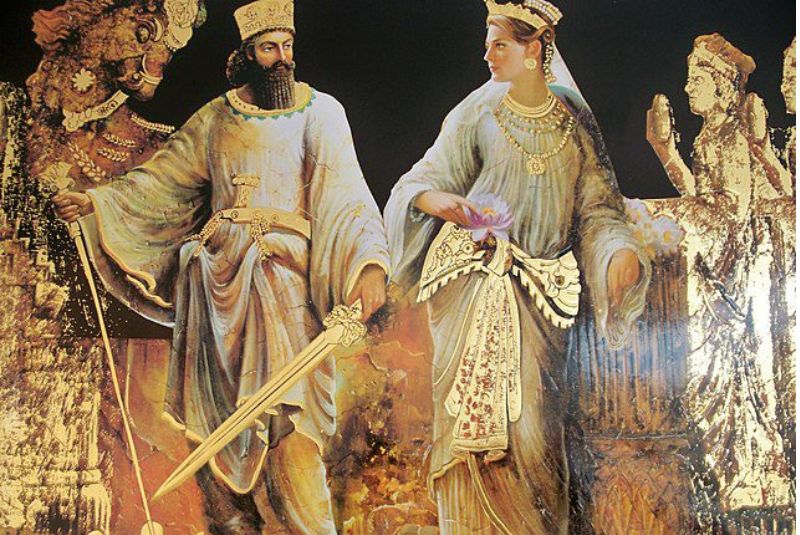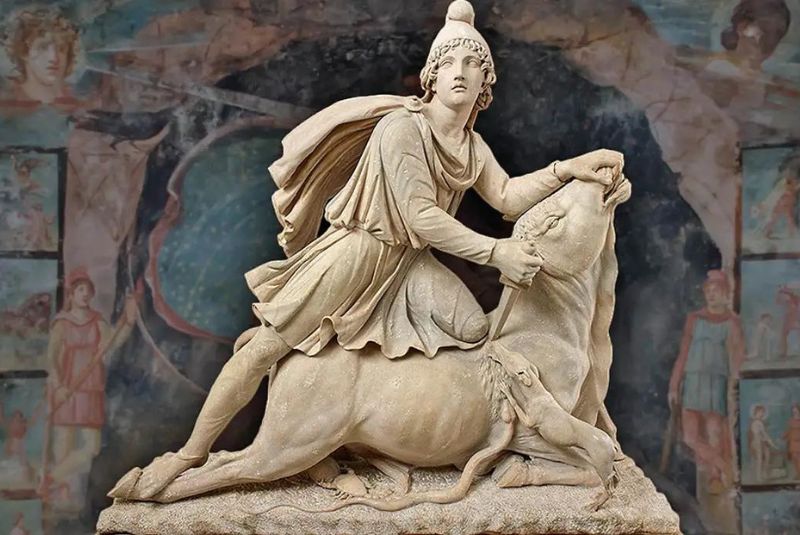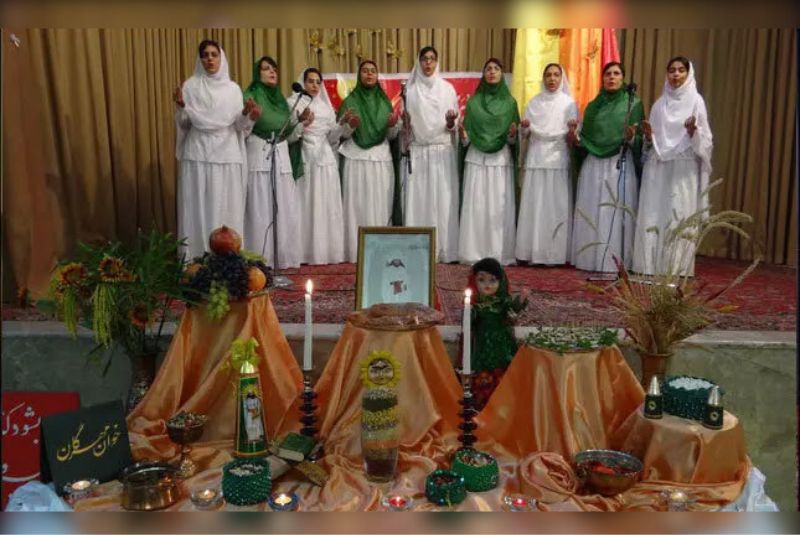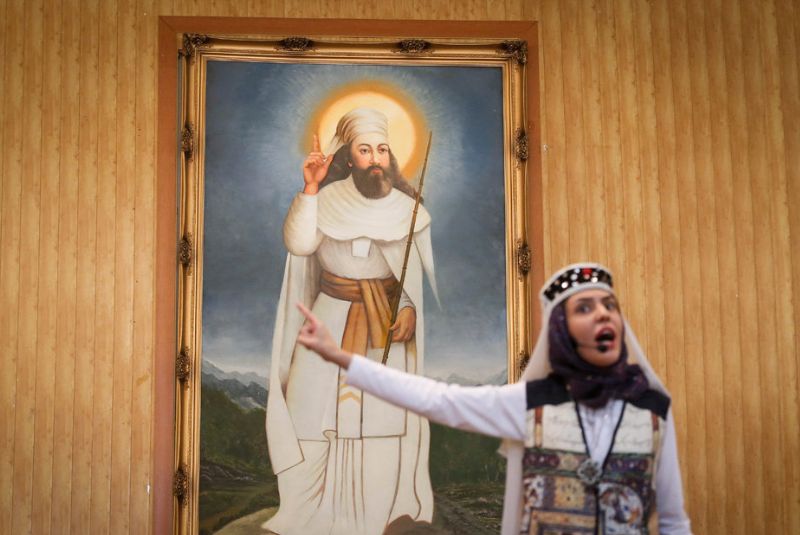Mehregan Festival in Iran | Celebrate Autumn with Zoroastrians
As summer's warmth wanes and the leaves begin to turn, a vibrant festival lights up the autumnal landscape in Iran and Zoroastrian communities worldwide.
Mehregan celebration, also known as Jashn-e Mehr, is a celebration steeped in tradition, marking the arrival of fall and honoring the bountiful harvest.
More than just a seasonal change, Mehregan is a time to reflect on friendship, love, and the blessings bestowed by Mithra, the Zoroastrian divinity of light and goodwill. Join us as we explore the rich history and customs of Mehregan festival in Iran.
History of the Mehregan Festival

The roots of Mehregan stretch back millennia, originating in Zoroastrianism, an ancient Iranian religion. The festival honors Mithra (also known as Mehr), a yazata (angelic divinity) symbolizing friendship, love, light, and justice. During the Achaemenid Empire (330-550 BC), Armenian subjects of the Persian king even presented him with 20,000 horses annually coinciding with Mehregan celebrations.
Mehregan's significance continued under the Sasanian Empire (224-651 AD), ranking as the second most important festival after Nowruz (the Iranian New Year). This emphasis stemmed from the connection between Mehregan and Iranian kingship, with Sasanian rulers often crowned during either Mehregan or Nowruz.
Echoing the grand celebrations of Nowruz, the Sasanian era witnessed elaborate Mehregan festivities in Persepolis. Visitors from across the vast empire journeyed to the capital, bearing gifts for the king on this auspicious day. Mehregan marked not only the harvest season but also the time for tax collection. Interestingly, the Sasanian court practiced a unique custom – if a gift-giver faced financial hardship later, they could receive double the value of their original offering.
The Mongol invasion in the 13th century significantly impacted Mehregan's grandeur. Over time, the widespread celebration of the festival faded. Today, primarily Zoroastrian communities continue to observe Mehregan, upholding its rich traditions.
| Related: Iranian Festivals and Celebrations
Mithra in Zoroastrianism

Mithra is an ancient Iranian deity with roots predating Zoroastrianism. He was incorporated into the Zoroastrian pantheon as a powerful yazata (worthy of worship).
Zoroastrianism is considered a monotheistic religion with one supreme god, Ahura Mazda. However, it also acknowledges lesser divine beings called yazatas. Mithra falls under the category of a yazata, a worthy-of-worship being but not the ultimate deity.
In the Zoroastrian Avesta scriptures, Mithra is described with lofty titles such as "Mithra of Wide Pastures, of the Thousand Ears, and of the Myriad Eyes," and "the Everlasting... the Province Ruler." He is seen as an all-seeing protector of truth, a guardian of cattle, the harvest, and the Waters.
It's important to note that Mithra in Zoroastrianism is distinct from the Roman god Mithras; borrowed from the Iranian Mithra by the Roman Empire around the 1st century BCE and primarily associated with a complex creation myth involving the slaying of a cosmic bull. Also connected with the sun, loyalty, military virtues, and mystery cults.
| Read about: Anahita - Goddess, River, and Myth
Customs and Rituals: How to Celebrate Mehregan?

Mehregan transcends a simple harvest festival. It embodies themes of gratitude, kinship, honoring traditions, and for Zoroastrians, a day to renew their covenant with Ahura Mazda and all their deities. As Mitra (Mehr) represents love, friendship, and affection, it's a day to express these sentiments towards loved ones and show appreciation for nature's bounty.
As Mitra (Mehr) represents love, friendship, and affection, it's a day to express these values and show gratitude for nature's bounty. Mehr, like a guardian, watches over promises, reminding people to keep their word and uphold strong social bonds. During the festival, Iranians weave together commitments, joy, and shared values, highlighting the bright spirit of Mehr and fostering a sense of togetherness. At its core, Mehregan emphasizes the importance of helping others and expresses gratitude for good fortune by assisting those less fortunate.
| Read more: Tirgan Festival - Ancient Water Festival in Iran
The Sofreh of Mehregan

The centerpiece of Mehregan celebrations is often the symbolic table, called a "sofreh." Typically adorned with a purple tablecloth, the sofreh features various symbolic elements:
- Dried marjoram: Representing purity and cleansing.
- A mirror: Reflecting self-reflection and introspection.
- An incense burner: Symbolic of fragrance and prayer.
- A copy of the Avesta: The Zoroastrian scripture.
- Silver coins: Representing prosperity and blessings.
- A "sormeh-dan" (kohl): A traditional cosmetic with symbolic meaning.
- Seeds, nuts, and seasonal fruits: Representing abundance and the harvest.
The celebration often begins at midday with families gathering in front of the mirror for prayers and hymns. Drinking "Sharbat" (Iranian juice) or pomegranate juice, and applying kohl around the eyes are believed to ward off evil. Seeds are playfully thrown over each other's heads, symbolizing blessings, before joyful gift exchanges and embraces conclude the festivities.
Mehregan Food
Mehregan, as a harvest festival, naturally features a focus on seasonal ingredients and dishes that celebrate the bounty of the year.
Fresh autumn fruits like pomegranates, grapes, apples, quince, figs, and persimmons are a staple. Pomegranates, in particular, hold symbolic significance, representing abundance, fertility, and life.
A variety of nuts and dried fruits are incorporated into Mehregan meals. Walnuts, pistachios, almonds, dates, and raisins are commonly used, adding sweetness, texture, and healthy fats to dishes.
Ash-e Haft Daneh (Seven Bean Soup) is sometimes featured on Mehregan tables. It combines various beans, lentils, grains, and herbs for a nourishing and flavorful dish.
Sweet treats are not forgotten during Mehregan. Traditional options might include pastries with nut fillings, rosewater-flavored desserts, or simple dishes featuring honey and dried fruits.
| Related: Persian Food
When is Mehregan Festival Celebrated?

Mehregan is a unique festival in the sense that it's a "name-day feast." This means the celebration occurs when the day-name and the month-name dedicated to a particular deity coincide in the year. In the case of Mehregan date, it falls on the 16th day (day of Mehr) of the seventh month (month of Mehr) according to the Zoroastrian calendar. This typically translates to the first week of October (on the 1st or 2nd) in the Gregorian calendar.
Mehregan's association with the month of Mehr hints at a possible past role as a New Year's celebration, with some scholars believing Mehr may have been the year's first month in the Achaemenid era.
It's important to note that there can be slight variations in the observed date depending on whether the Iranian or Zoroastrian calendar is used. However, there's general agreement on celebrating Mehregan around the 196th day of the Iranian calendar, which coincides with the first day of the month of Mehr.
| Discover: Chaharshanbe Suri - The Festival of Fire and Renewal in Iran
Where Do People Celebrate Mehregan?

While Nowruz enjoys widespread celebration, Mehregan festival in Iran primarily takes place within Zoroastrian communities, particularly in Yazd and Kerman, Iran's Zoroastrian hubs. As this festival is a more intimate household affair, travelers interested in attending Mehregan during their visit to Iran might consider reaching out to Zoroastrian centers or contacting cultural tourism organizations in Yazd and Kerman.
Beyond Iran, Mehregan is also celebrated by Iranian diaspora communities around the world, keeping the traditions alive in places like:
- Afghanistan
- Tajikistan
- Uzbekistan
- The United States (particularly by Iranian Americans)
- Canada (celebrated by Iranian Canadians)
Final Takeaway
If you're looking for a unique travel experience, consider joining the Mehregan festival 2024! Witness the rich traditions by visiting Zoroastrian communities in Iran, like Yazd or Kerman. Alternatively, connect with Iranian diaspora communities around the world who continue to celebrate this special occasion. Mehregan welcomes all with open arms, offering a chance to experience the warmth of Iranian hospitality and create lasting memories.
Share your story!
Comment below and let us know about your Experience.
Your story inspires others!


Comment
Leave a Comment